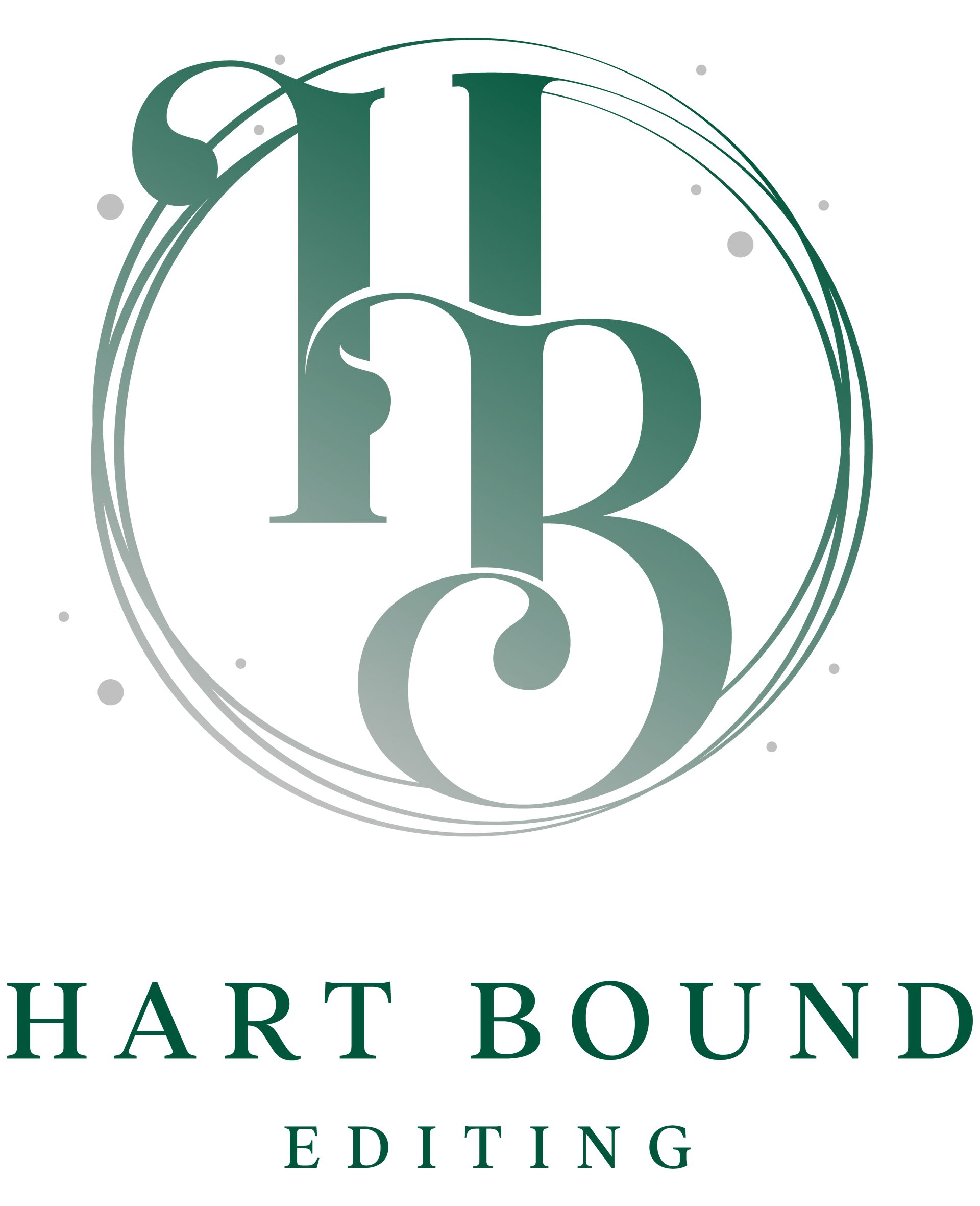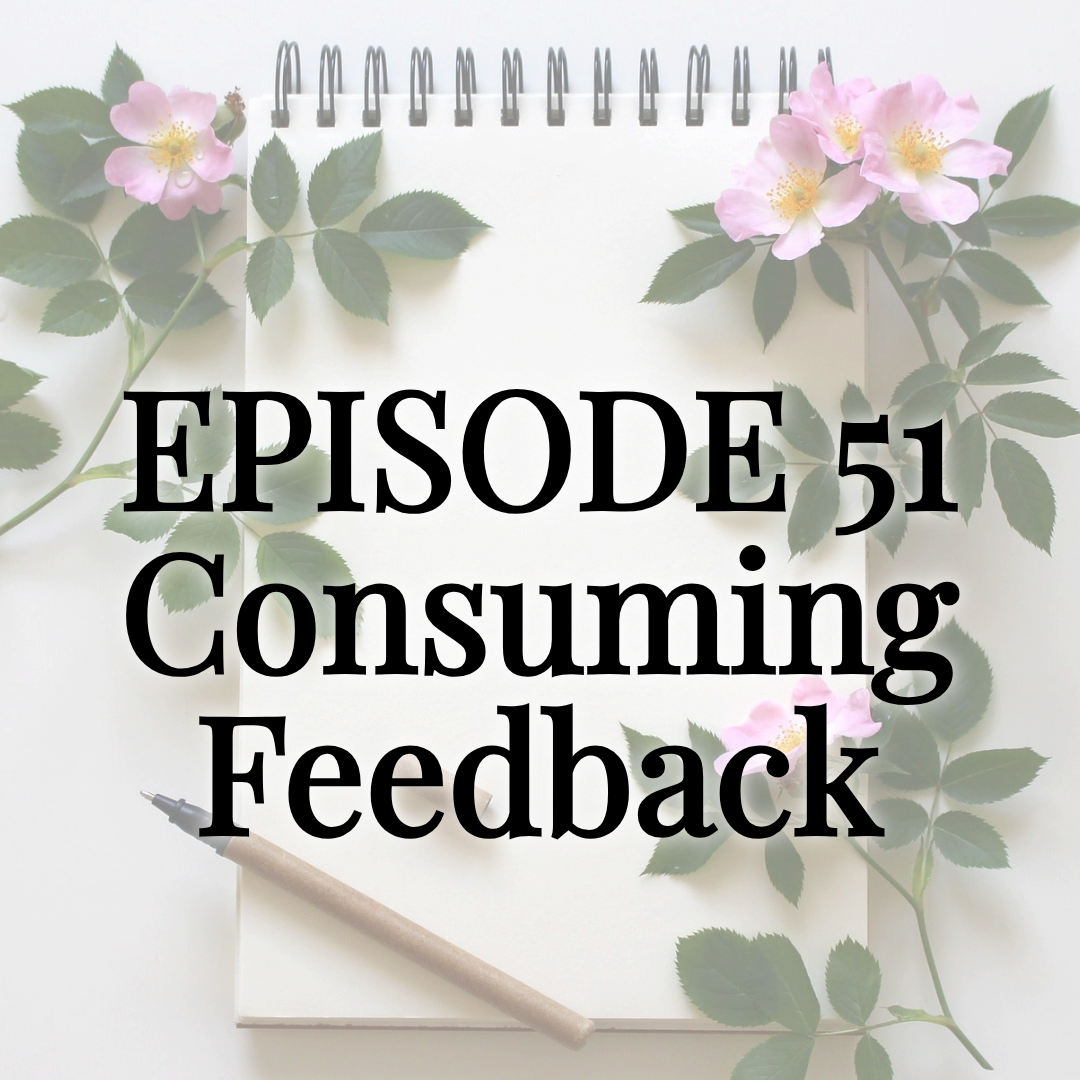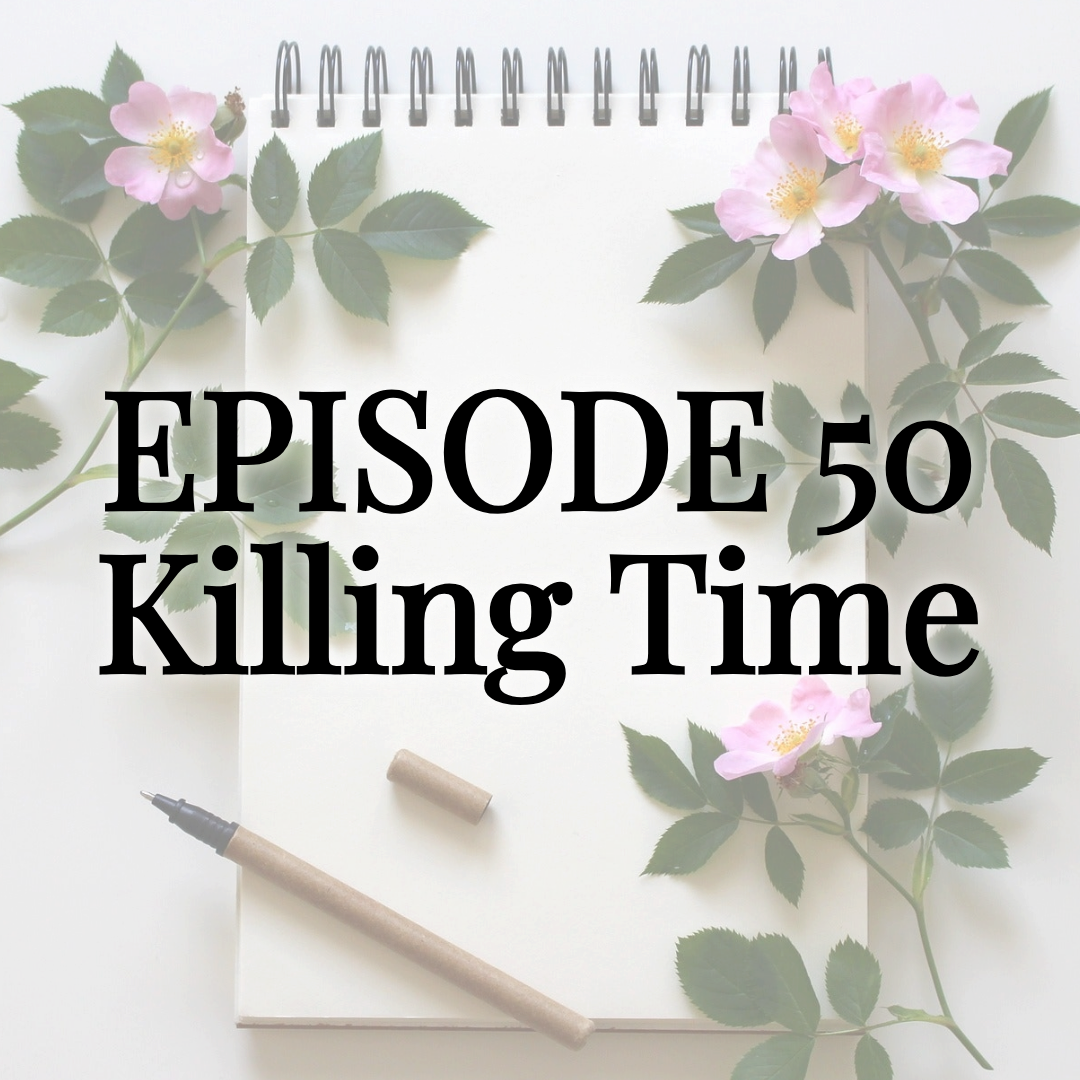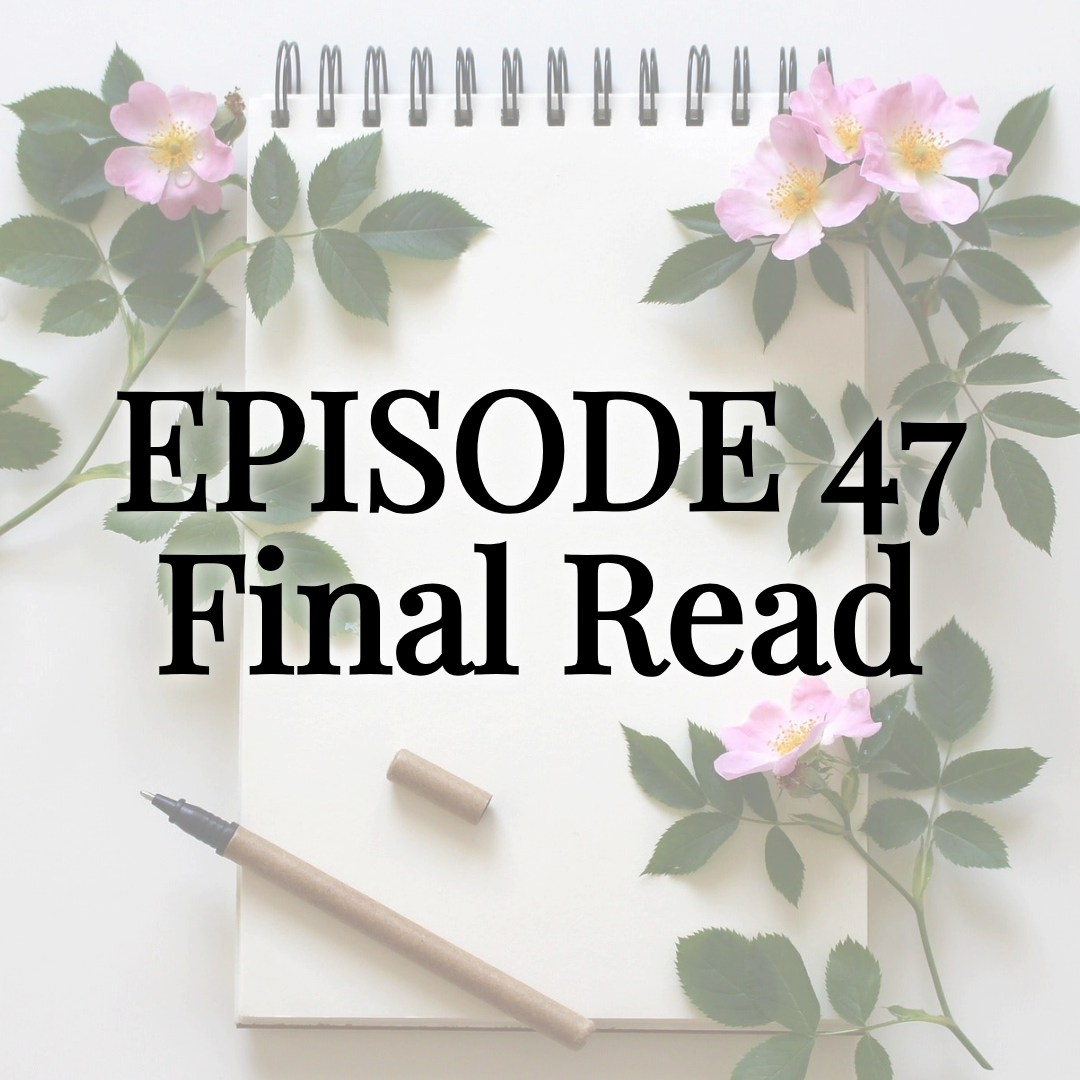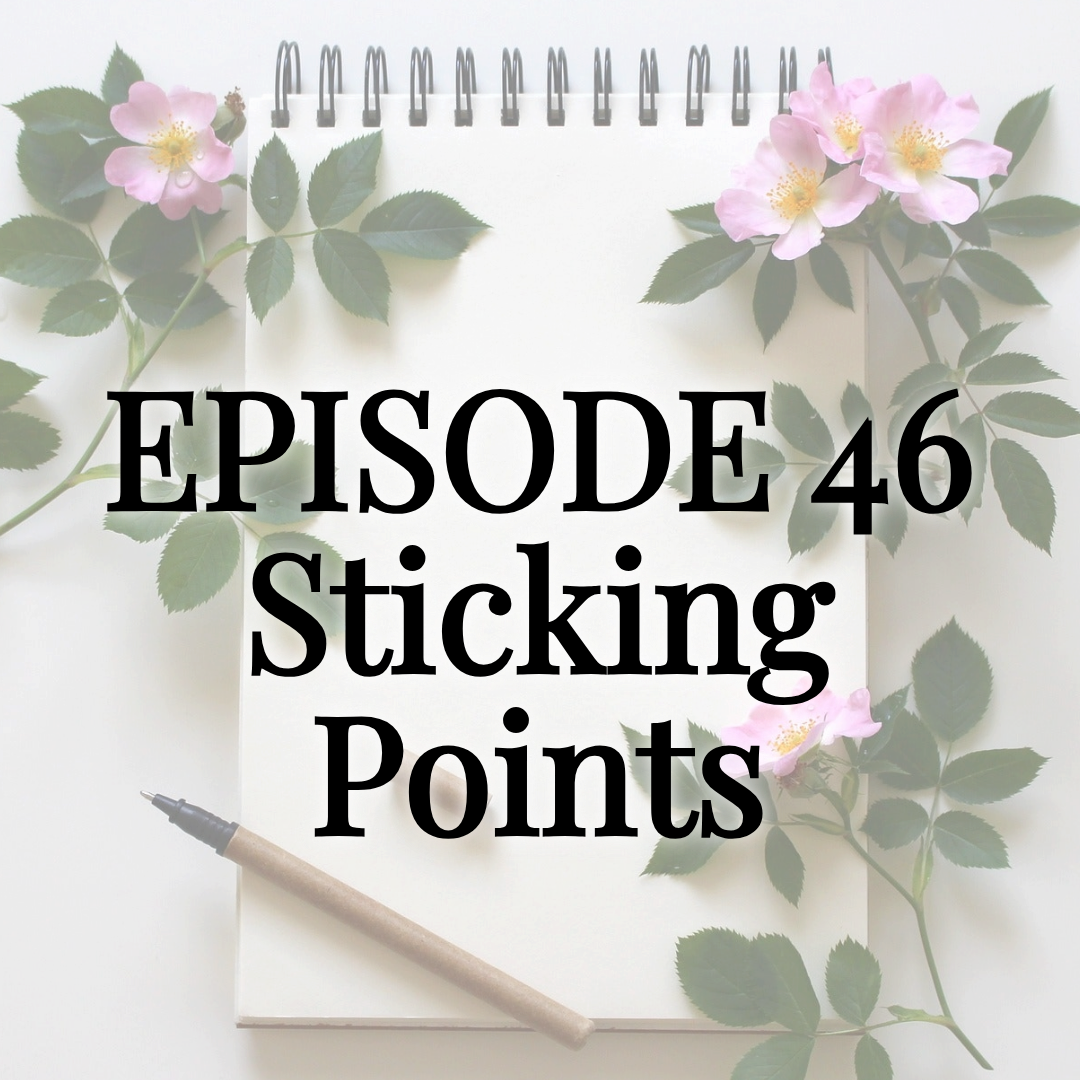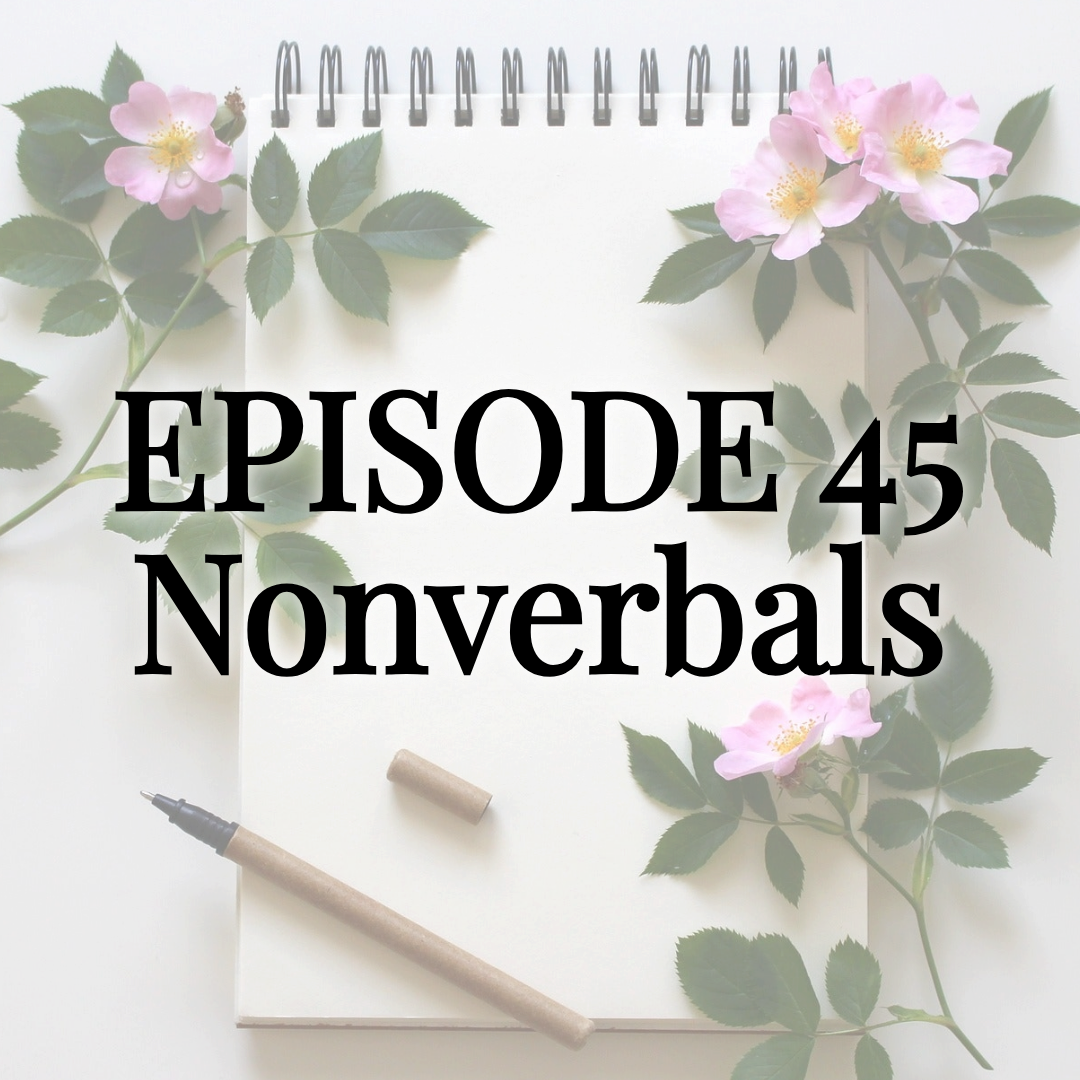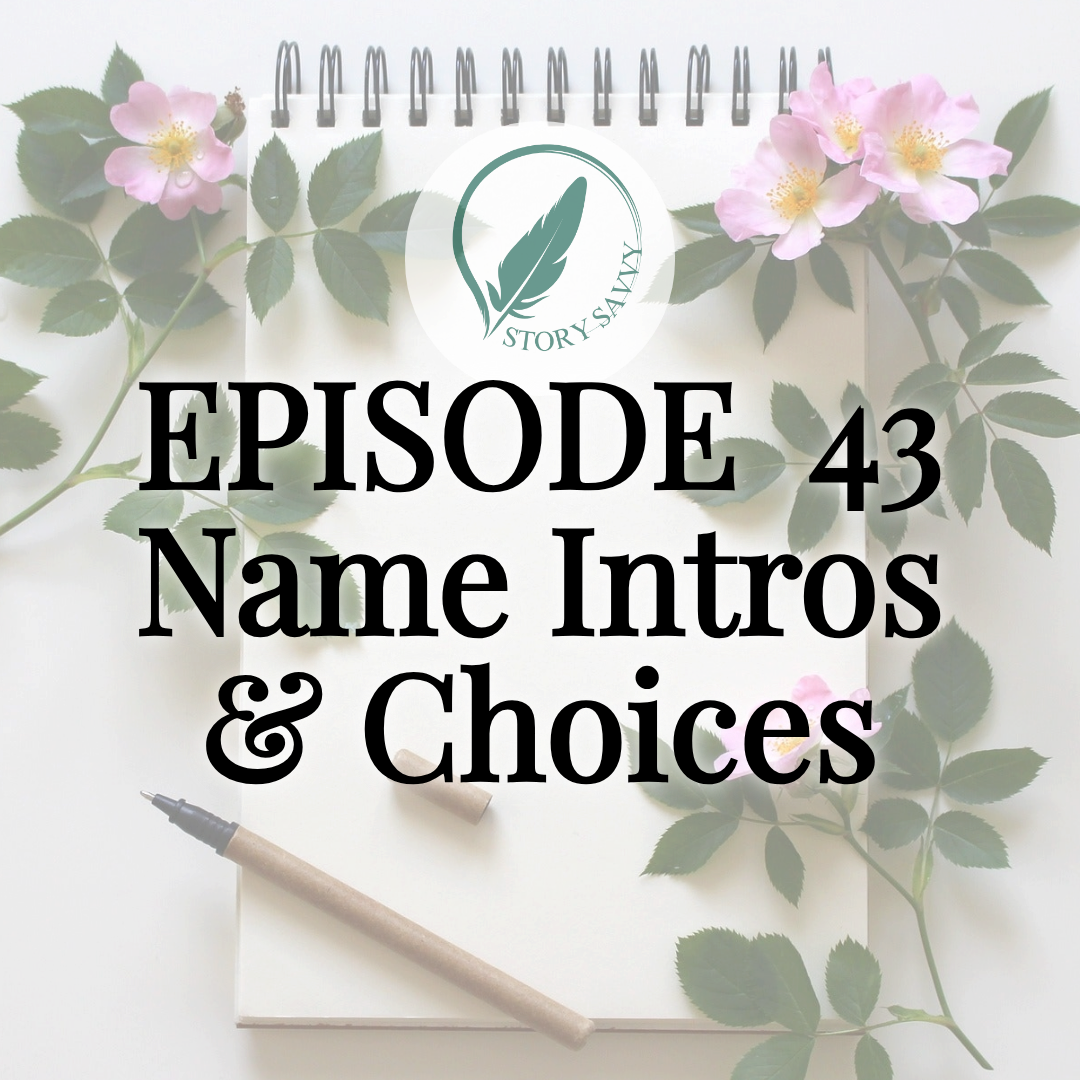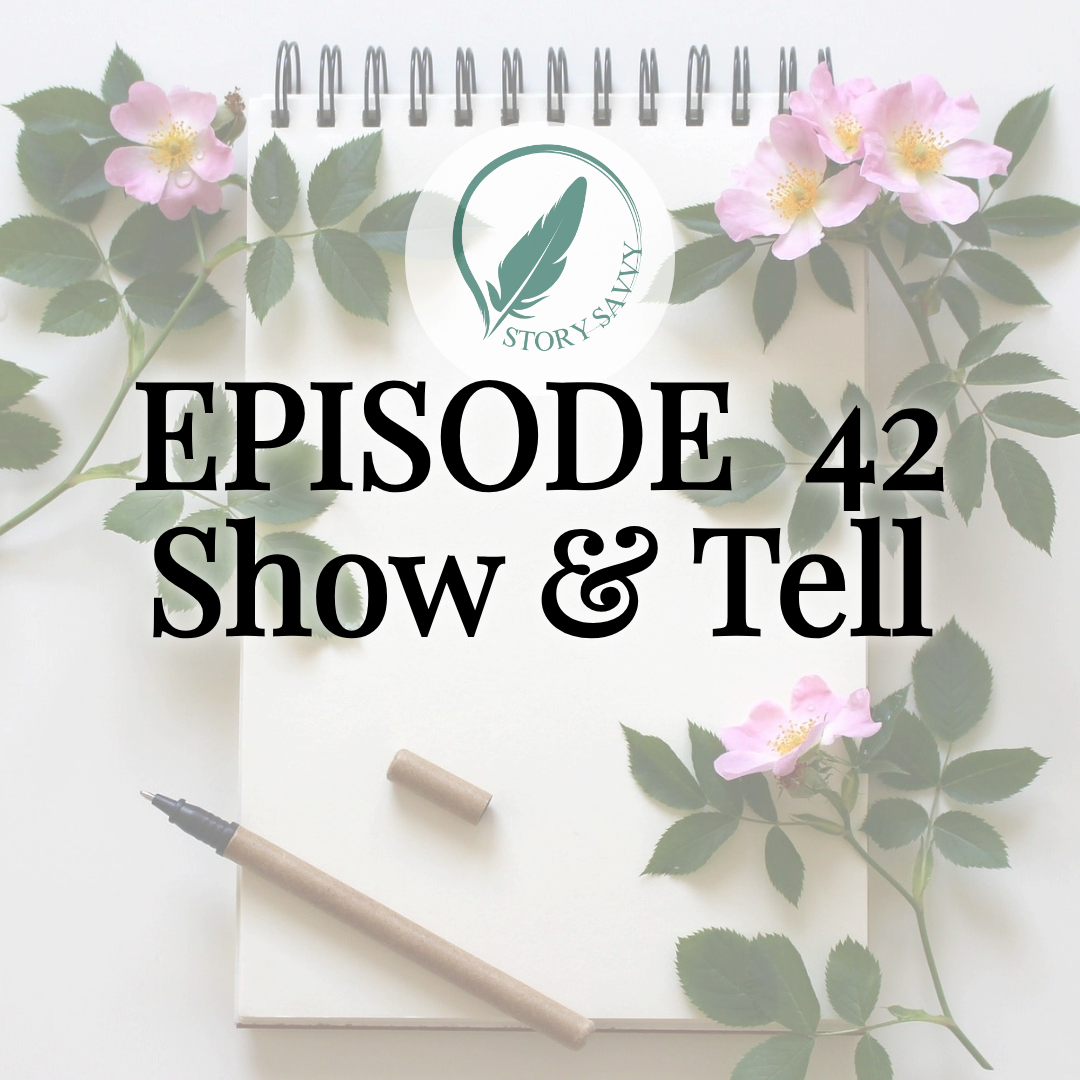Tangible World Building: Story Savvy Self-Editing Episode 33
Tangible World Building: After-episode thoughts, overview, and transcript...

First, I want to talk about how the inclusion of something inconspicuous can need enormous justification rippling out from that, which you need to consider around you world building when self-editing. For example, lets say you mention a character pulling on socks and rushing out the door. On the easiest side, is knitting invented in your world? How widespread, accessible, or affordable are those supplies, tools, knowledge, and the resulting products? On the worse side, non-knit socks, tights, or stockings without garters require elastic, which requires synthetic textile production, which requires fossil byproduct mining, which implies that plastic should also be in common use in that world. How are you answering and considering all of those questions in your world building, and what ripple affects of those answers need to realistically impact other aspects? Many readers won’t care about those things, but many will.
Second, I got rather impressively sidetracked setting up to give examples of world building statements in this episode, like I suggest doing for characters statements, so let me give some examples here:
"My world is pessimistic, but with a high quality of life which frustrates my protagonist when they really engage with it."
"This world is highly reactive but deeply resistant to systemic or sustainable change."
The world for this series loves order and stability, and is willing to sacrifice anything and everything except _ to maintain it."
Hope that's helpful within the context of the episode!
Third, here are direct links to the other episodes in this series which I reference or recommend in this episode:
Episode 29: Character Consistency, Depth, & Uniqueness
Episode 31: Avoiding Scene Stagnation
Episode 32: Intangible World Building
Happy editing!
Episode 33 Overview:
Tangible World Building
"Are my TANGIBLE world-building details impacting my arena and avatars? Enough to justify active inclusion, instead of leaving them to subtext? Are my geography, clothing, food, travel, architecture, and other tangible world building choices all working well together?"
In this episode of our podcast for fantasy authors, we dive into self-editing strategies for writers focused on clothing in fiction, geography, weather, and architecture—critical yet often overlooked elements of story world development. Developmental editor Rebecca Hartwell shares insights on using worldbuilding details to actively shape character actions and scene direction, while guest Addie Dulac brings real-world examples from her historical romance series. Learn how integrating setting and story can heighten immersion, reflect theme, and reinforce tone—especially when discomfort or inconvenience is allowed to push the plot forward.
Developmental editor Rebecca Hartwell ] is joined by historical romance author Addie DuLac, whose richly detailed Troublemakers trilogy serves as a powerful example of tangible world building done right. Together, they discuss how to make your settings affect plot, how to integrate world details with character moments, and why inconvenience can be your best plotting tool.
In episode 33, they wrap up the world building duology of episodes with an in-depth look at how weather, wardrobe, animals, laws, and more can create tension, shape tone, and drive story arcs in both fantasy and historical fiction.
In this episode:
· How to deepen immersion through concrete setting details
· What tangible elements are most often underused
· Why every setting should influence character action and emotion
· How to avoid world building for convenience’s sake
· Techniques for using weather, clothing, and transportation to steer the plot
Resources:
Author’s Alcove Membership: authorsalcove.com
Read Addy DuLac’s books here: www.addydulacauthor.net
Fantasy Book Giveaway: authorsalcove.org
See you next week for episode 34: Sensory Immersion—Sight & Sound!
Episode 33 Transcript:
Tangible World Building
Rebecca Hartwell: Hello and welcome to the Hart Bound Editing podcast. This episode 33 of the weekly story savvy series where we tackle the 52 biggest self-editing topics and tips to help you make your good story great, as a published author asks me, a developmental editor, all of the questions that you have wanted to.
My usual cohost, Agnes and I have covered a bunch in this year so far, and last week Addy and I went over the aspect of intangible world building to check in our stories.
Today we are going to finish out this topic by talking about tangible world building. By the end of this episode, you’ll all hopefully feel confident identifying where you might want to change or tweak parts of your tangible world building and have a good idea of how to do so intentionally and creatively.
Joining me to ask all the questions is my friend, former critique partner, and author of One Season with the Duke, which I had a great time critiquing and giving feedback on, and The Troublemakers Trilogy, the fourth book of, sorry, the third book of which is coming out in September, so just next month. Welcome Addy DuLac. Hello!
Addy DuLac: Hello!
Rebecca: Why don’t you tell us a little about you and your writing, whatever you feel like mentioning, before we dive in with questions here?
Addy: A little about me, in case you were unaware, I’m Addy DuLac. I primarily write interracial historical romance. I’ve released three books so far, between my two publishers. My first novel with entangled was the aforementioned One Season with the Duke. It won three Emma awards for best novel, best debut, and best interracial romance.
Rebecca: Congratulations!
Addy: Thank you! That was a weird experience, but I was excited about it. My first trilogy, called The Troublemakers, is being released with Dragonblade publishing. It really features three heroes from diverse backgrounds. One is Chinese, one is South Asian, and the third is from the Caribbean, and the equally rebellious male leads are taking on racial, familial, and social tensions while they fight for their right to love, live, and thrive in Victorian England. Not an easy task. I love drama, I love angst and steam, when I'm writing and when I'm reading. My favorite primary tropes are arranged marriage, marriage of convenience, and adversaries/enemies to lovers. I also like mixing these things. There's nothing better to me than a marriage of convenience with enemies to lovers. Like, that is my cat-nip, that’s perfect.
Rebecca: Love it!
Addy: I won’t take it back! So, moving swiftly on, I write in third person dual, mainly. Sometimes I dabble with triple POV, and mostly because it’s my favorite to read and, therefore, to write. My fourth novel, the last in my Troublemakers Trilogy, is due for release in September, as Rebecca stated. It is called Miss Hawthorne’s Unlikely Husband and it follows Miss Elodia Hawthorne, and the challenges she takes on to marry the man she has loved since she was 15 years old. So, look out for that!
Rebecca: I can’t wait!
Addy: So, last week we went through intangible world building. Since I asked you last week to define intangible world building, could you also define tangible world building?
Rebecca: Sure, so tangible is anything that you can touch, essentially. Very, very basic there, so that can be the clothing, which is my niche so I tend to over-emphasize that a little bit, but it can really make a big difference in how the characters move through their world and present themselves, and all that kind of thing. Tangible world building is also horses and transportation, geography and maps, buildings and architecture, money and other means of exchange, food and drink, means of communication, so reading and writing, if they have telegram systems, anything like that, and so, so many other aspects like that.
Laws, government and religious rules are sort of this murky gray area between tangible and intangible, so I’ll just mention that again here since I think I only mentioned the religious aspects last week.
Addy: Yea, in book one of The Troublemakers, laws became very tricky for me because I had a sort of a Gretna Green escape/elopement situation and unbeknownst to a good amount of most people when they’re reading historical romance, they read it in Regency where you could just pop over to Gretna Green and then come back, but because I decided to be difficult, I did it in Victorian England and apparently in—well not apparently but I think it was like 1839, no 1849 or ‘59, its later on, I think its ‘59—they changed the law, so that like if you went to Gretna Green but you didn’t—if you went to Gretna Green had to stay in Scotland and be a resident of Scotland for, I think, two to three weeks before your marriage will be considered a real thing, so you couldn’t just pop over anymore.
Rebecca: That still doesn’t seem very long, but yeah that’s a great example of world building that’s relevant and you need to pay attention.
Addy: It’s not that long but when you’re trying to, yeah, because you think that like, let’s say if you run away to Gretna Green with your boyfriend, right? Three weeks, it’s not a long period of time but it’s a long period of time for you to avoid detection from your parents because even if your marriage—even if you consummate your marriage, it is not considered legally binding unless you’ve been there for two to three weeks, which means that your parents could still drag you back we can still be annulled, you can still have problems. And now you’re deflowered on top of it, so now it’s like a whole situation, right? But it’s like, before, as long as you were knocked up you were good, like as long as, you know? So, that’s one of those situations where you just, like, know what those law are at the time because it could screw up your whole plot, you know. Case and point.
So, is there a reason you felt like it was important to cover intangible world building before tangible world building? I feel like when most people think about world building, they think of either of those together or just the tangible side, I think.
Rebecca: Yeah, and that’s largely the reason. I basically think that it’s better to deal with the harder, newer, perhaps more cognitive-dissonance-expanding-your-brain-functioning aspects first, and especially since those are going to have the bigger impact. So, if you’re looking at these intangibles and religion and mindset and belief and all of these kind of things, that’s going to take more effort, so getting the hard stuff out of the way, and then then doing the nice quick and relatively easy aspects of the tangible tends to work better for the authors that I’ve helped through this process.
And then related to that, it’s also better to change what intangible things you need to before you polish off the tangible. Because it’s more likely that intangible changes, or needed changes, are going to have a big effect and change the tangible than the other way around. If you decide that you need to set your story in a place that has completely different mindset or set of laws, like we were just talking about, that’s a big change. And if you’ve already put in the work of polishing the tangible world building for the wrong time in place, you’ve wasted that time. So, making that decision on the intangibles first is basically all-around the smarter way to go, and then once you’ve locked that in and done those edits, then going in and polishing those tangible aspects.
Addy: So how can we strike a balance in present our tangible world building between giving enough detail that readers can feel immersed but not so much that they get bored and distracted?
Rebecca: As always, like I mentioned in the last episode, make sure that you mention things (and ideally show them as the mention) just in time rather than just in case. So, mention it in the moment where the reader needs to know it, where it becomes really, really important to know instead of five chapters earlier just in case they need to know it later, just in case they’ll remember it. Just in time, not just in case, every single time.
It’s also just important to remember what I was talking about earlier—I think it was two episodes ago with scene stagnation. Look at those markers. Look at those proportions that we talked about there, and make sure that on a scene-level basis, on a page-by-page basis, you’re not falling into either dialogue stagnation, description stagnation, or just everything happening with no description or dialogue stagnation. That’s really, really what we’re watching for here.
If you have a really slow-paced scene where you’re worried about that balance being off between your tangible world building and other things you can also just look at adding more things that are happening on the surface while you’re building that background stuff in the background. The really, really important word there is happening.
Addy: What if, in self-editing, we realize we need to go back to the drawing board in designing or clarifying the tangible world of our story? What are some questions listeners can ask themselves as they explore their worlds in more depth?
Rebecca: Sure, so the same as before, really, but for this I suggest you start with, what do you need your world to do, if your world building was perfect what service would it be doing, what purpose would it have, what would it be doing? And then ask yourself: how could your world building choices better tie into your theme, and your stakes, and your genre and all of these things that I’ve talked about in previous episodes? Once you’ve asked yourself those two questions and come up with answers that you’re satisfied with, then go through that other list that I mentioned and try to match that ideal before applying the changes that you decide you need.
Addy: So how can I make sure that I have the right setting choices for the whole world and each for each individual book?
Rebecca: The main question here is, “does it impact the scene in anyway” (to start with), and in a good way, and then in a meaningful way.
So, when you’re checking this just look at if it is giving you more to work with. Is your tangible setting a choice giving you more to do, more to explore, more to overcome, things like that?
You can also check if it creates or furthers goals, motives or conflicts. If your setting choices, let’s say, help your character get closer to their goal, or reminds them of their goal, or brings up old motivations that they’re trying to get away from, or the setting itself creates conflict, that’s a good indicator that it’s the right choice.
Does the setting choice complicate things? This is very much connected to that idea of conflict.
Does it create hurdles that need to be overcome?
And then lastly on my little list of questions to ask yourself here is, “does it add to the tone or immersion?” And sometimes this choice looks like picking a new setting that you haven’t used before instead of reusing an old one. Or picking a setting that is more tonally on point for that moment. So, for example, instead of having your lovers have their breakup seen at home, because you have already done scenes there, have them do it at a theater as everyone’s leaving at the end of the play. Those are going to really impact the tone of the argument because of the witnesses and because of the setting, and it is going to impact the immersion because having it happen in a much more involved setting is going to get your reader more pulled into the experience of that scene.
Addy: What are some of the most forgotten aspects of tangible world building in your opinion?
Rebecca: I would say, my one answer here, honestly, that applies to a bunch of different stuff is that authors forget that you can use all of the aspects of tangible world building, not just include them.
So instead of just mentioning that horses are used, use that. Have a horse buck and the protagonist falls off and then they have to walk home because the horse ran off. Have the horse step on a caltrop and so the carriage has to pull over and they can’t go further. Have a silly moment where horse gas absolutely interrupts a flirtatious or otherwise serious moment.
Use these tangible things. And like, for clothing, don't just mention that she’s wearing a ball gown, have her get stuck trying to get out of a carriage. Have the train get muddy, and this brings her social shame.
All of these different aspects of tangible world building can just be included, but it’s going to mean so much more and be so much more memorable and immersive if you use them.
Addy: Is that sort of like—I guess when you're setting a scene, you are setting a scene, but it’s sort of showing not telling sort of situation? Because it seems like that’s the difference, instead of saying, “Hey we have horses here”, it's, like, great. But like you could sort of interweave (is the conjugation? I can’t spell.) You can thread them into it and then they know that they are there, rather than just being like “we use horses as a means of transportation.” It’s like, what if everybody’s using the horses? Right?
Rebecca: So, there’s overlap there. And yes, I highly recommend always showing rather than telling, especially round world building.
But I mean here is specifically: there’s a branch in two different directions a story could go. One in which this tangible world building thing doesn’t exist, and one in which it does. So when your protagonist goes to the ball and she’s in her big hoop skirts, there’s one version of that scene in which she doesn’t step in the mud puddle and get her dress muddy and the reactions that she gets, the way that she feels about her own confidence, is very different than when she does step in that mud puddle and her beautiful silk dress that she just spent pretty much all of her money on gets muddy and stained, and so she then spends the whole ball in this very different direction.
So, when I talk about using these, what I mean is use them in a way that forces that story to branch from where it otherwise would have gone. Instead of just having the horses pulling the cart so the protagonist gets home on time and goes to bed and things go from there, instead the horse steps on a big rock and gets lame, and the cart pulls, over and they’re delayed by several hours while they get the stone out and calm down the horse, and all of this kind of stuff. So when she gets home, her parents are angry and think that she was off with a guy which is why she’s late and the story has a different direction.
So, when I’m talking about using things and making matters those little branching moments. Don’t just show them, show them changing how the story moves forward at some scale.
Addy: So, it’s like if, like sliding doors kind of, like she would normally walk home but her friend offers her a carriage so she’s able to take the carriage home, and now she catches her husband in an affair, kind of situation.
Rebecca: Yep!
Addy: There ya go.
Rebecca: I’m glad you asked that.
Addy: What are some of the biggest mistakes that you see authors do when building their world, especially in historical fantasy?
Rebecca: First of all, they don’t care enough about that aspect. I’ve read quite a few books where the author was very character-centric or plot-centric and they very much let the world building happen as an accidental afterthought to the plot or the characters.
As an author this is an important aspect to think about especially in self-editing. It’s fine if you don’t think about it too much in the planning or the drafting but there’s a reason we’re doing two whole episodes on it in this series. You need to give it thought because it really does have an impact and it really does affect how the reader experiences the book, but then more than that, remember the book, and feels a part of that world like we talked about in the last episode in fandoms. World building has a lot to do with how people become fans and you want fans after the fact.
Another common mistake that I’ll see is that they never consider the intangible repercussions of the tangible aspects. At the highest scale this can be they pick the 1860s because they love hoop skirts—and I get it, I do too—but they don’t then consider the social ramifications, cultural ramifications, the rights and rules and laws of that decade in whatever part of the world they decide to place the story.
When you make a tangible choice, let’s say such as your world having minted coinage to purchase things with, that has intangible repercussions about how people view, in this example, labor, and exchange, and wealth, and legacy. All of these kinds of things. You need to consider the repercussions.
And then the third most common mistake that I will see is that they simply reach for convenience too often. I totally get not wanting to dwell on the nastier aspects of historical settings, or modern ones for that matter. You really almost never need to describe a character using the bathroom, but if it becomes unavoidably relevant, don’t throw away the general or specific world building that you’ve done in the name of convenience, either for you as the author or for your protagonist. When things aren’t convenient that’s what’s interesting to read in novels. So, if your character needs to get from point A to point B and you live in a world where horses are the best transportation, they need to take a horse. You can’t magically invent trains in your world for this one transportation. So, when you hit a snag in your world building and you’re tempted to reach for—or you noticed that you did this in drafting—you’re tempted to reach for convenience, consider not doing that. Consider letting it be more accurate—historically accurate—and show that darker side, show that inconvenience, whatever that happens to be.
Addy: That’s kind of like what you were saying, by using the inconvenience to shape the plot, right?
Rebecca: Yeah.
Addy: How can we make sure that our world building is logical and consistent throughout?
Rebecca: I touched on this a little bit in the last episode, and it really comes down to: make those “world statements” like your world is a character.
Make statements like “OK its set in this rough time period and this location”—and again this applies to modern and I’m talking about a lot in the historical and fantasy context, but even if you’re writing contemporary, this can matter—and make statements like—oh and I also wanted to mention, this can apply to simply to protagonist 's interpretation of the world. So, through your protagonist's world view the world can be a dark and dangerous place or it can be a bright and beautiful place full of opportunity. Make those statements about how your world exist objectively, but it can also be really helpful to make statements about how your protagonist use it objectively [correction: subjectively]—sorry, no, other way around, but anyway, you get the point. So, it’s not just about how it is, but also how it is perceived.
So beyond making those statements and going back to them, referring to them, putting them in your Series Bible, knowing where to find them, I also suggest that as you’re reading through your book, if you see something that you wrote in drafting and you’re like, “oh that counts as world building”, copy and paste that into your Series Bible. This doesn’t have to always be you coming up with ideas and then going in and applying them. You can see what you already did or what you even subconsciously did without realizing, but the point is you need to collect them so that you can use it as a reference point. So, when you’re reading through, collect those and start building out that Series Bible more.
Addy: I know we need to wrap up, but I have one more question for you. Are there any specific aspects of tangible world building, such as clothing or horses—that seems to be the consistent thing which I know are your specialties—which you’d suggest authors watch for in self-editing? Or that you have specific advice on?
Rebecca: So many different topics!
So, when I am editing, this often comes down to what that individual author needs. I don’t have a standardized template of any kind when I’m doing developmental edits because every story is very different and every story has very different needs.
So, just off the top of my head some of those have been one person really needed help with geography, and I ended up talking through (it with) them after the fact in our debrief and emails just figuring out OK what does the city look like? Cause I know there’s a harbor and I know there’s a cliff that overlooks it but the two don’t seem to line up in any kind of logical way from what you described.
Clothing is a common one, but again, that’s one of my specialties and I’ll have—particularly historical—writers contract me just to do the fact checking on the clothing. So, for the clothing I recommend either staying very vague, so just say “a dress and an under dress,” or “a shirt and trousers,” or do your research and use the right terms. Make sure that you’re using the right layers, the right structure. I think it was the last episode we were talking about how corsets are really important as an exoskeleton to hang all of those heavy skirts on.
Addy: They are a foundational garment, they are not just there to, yeah.
Rebecca: Yeah, It's not always just fashion. A lot if it has to do with a system of clothing, for functionality and ‘this piece only exist because this other one is always worn’ kind of thing. So do a little bit of research if you’re writing historical and like talking about clothing, hire an expert, it doesn’t have to be me, but please have someone check it to make sure that it’s right.
Horses are a really common one. I’m in a lot of different writer and reader groups and horses is probably the topic that I talked about the most as far as getting that world building right. And I will also say here that if you decide to come up with a fantasy version of horses which I see regularly in high fantasy, you still need to make similar decisions about, what is—let’s say giant moose that you can ride—what is their psychology like, what is that training process? Can you ride them? Can they only pull carts? What does that harness look like? Do you need to steer the horns? Is it a bit in the mouth? Think about these things.
Yeah. Pretty much any topic I can have specific recommendations about so if anyone listening to this has a specific topic in the tangible world building that they want advice on, email me my email is all over my website you can find that that, and that might be anything from cities versus towns versus farms and the considerations about that. It could be dates and telling time, it could be how people communicate when they’re not in person.
The last thing that I really, really, REALLY want to talk about here is weather. Weather is a big intangible part of the world building that I don’t think it’s used enough. And we talked about this a minute ago, and I’m so glad you had me define that further but use the weather. Use a bright sunny day to force the protagonist to find shade or to survive in the desert a shorter amount of time. Use a storm to force your protagonist to seek shelter, to step in a mud puddle, to need to get a carriage instead of riding their horse. Use your weather choices. It’s amazing the difference that a foggy day and a clear day can have on the tone of the scene and how it goes and how it affects the protagonist mindset and their choices, and all that kind of stuff, so please don’t forget weather as part of your tangible world building.
Addy: Oh yeah, because every time I think of weather I think if forced proximity. Like, you want to go further but I guess you’re going to just be stuck with your crush under this tree because there’s a rainstorm. And if the storm gets particularly bad you may need to stop by the woodcutters or groundsman’s cottage, and just hang out there for a bit, and hope that nobody notices and you don't have to have a marriage of convenience, because, you know? The amount of times in like historical romances absolutely have just like, “weather.” It's like, “what? Oh, there’s a snow storm, you’re about to fuck three days straight. Three.” Because you could hold out for the first half of the first day, and after that it's to the races, right?
Rebecca: It could affect your stakes, like maybe you get stuck out in that blizzard, and you're on the cusp of death and that woodsman comes and rescues you and you have to spend a week recovering.
Addy: What are you going to do? He can’t just take you home, you're dying! But I also think of horses going, like when you're on a journey and you're going off and I keep thinking if Lisa Kleypas’ The Devil in Winter, where you had that issue, I don't know if you ever read that one, but it's a book where in the beginning you have the heiress escaping with this scoundrel that she specifically sort of like hunted down and conscripted to marry her because she’s trying to escape her family, and she—I think it’s one or two chapters of the journey from London to Gretna Green, and she’s very careful about, “what is the reality of a journey to Gretna Green? What does it feel like?” And you get into weather, it's cold. It's getting colder and colder the further north you go. These horses have to stop every 30 miles to switch out. What does that feel like? These carriages are not—they are the best carriages that money can buy, but it’s still a damn carriage. And after 12 hours of bouncing around and stopping in the middle of the night and all kinds of stuff you’re tired, you’re hungry, you’re achy, you’re cold, you’re running out of all this stuff. And you can’t fall asleep yet because when you get to Gretna Green you need to get married immediately. And it’s just like the wear that it has on the characters, and you're—it makes you really think about if you tried to escape to Gretna Green, like how badly do you need to marry this person? Because this is about to be the most uncomfortable night of your damn life. And that’s your best-case scenario. Right? Even with, he’s a viscount, he’s the son of a Duke, so the stuff that he has at his disposal is the best of the best. Like he has everything. And the best of the best leaves you ragged. Okay?
Rebecca: Yeah, because that is all tangible world building, and when it's historical you have really clear bumpers on how uncomfortable, and unpleasant, and wet, and cold, and chafing you're going to be.
Addy: But if you think about the character, but also as you’re doing that it forces, or it allows you, to build a certain sense of emotional closeness or physical closeness between your two characters because now, even though they started off and she was like, “get in here! Dance beggar boy”, now it's like “no, I need you to take care of me”. And he’s like “I know, I’m here. I’m also tired”, that kind of situation, like that kind of stuff. No wonder! It helps to set the stage of the person you're dealing with as well. It's good for character development and it's good stuff! Okay! This has been so much fun. Yeah!
Rebecca: Glad to hear. I love chatting with you, and I love your clarifying questions, and examples, and everything like that. Again, thank you so much for stepping in as a guest-host on this show. I really appreciate it.
Addy: No problem!
Rebecca: Next week I will be getting into the first of two episodes on sensory immersion, so, related, starting with sights and sounds.
For now, a huge thank you to everyone who follows along with the series. If you haven’t subscribed yet, please do. We would really appreciate that. Both the Hart Bound editing podcast and Author’s Alcove podcast. You can find lots more content beyond this joint series in both of those places.
And then lastly, I highly encourage you all to go check out Addy DuLac’s awesome interracial historical romance novels at addydulacauthor.net, that is addydulacauthor.net and to follow her on Facebook, TikTok and Instagram at AddyDuLac_Author, and definitely keep an eye out for her next book in September.
Addy: Yay!
Rebecca: Thank you so much for listening to the Hart Bound Editing Podcast. I look forward to bringing you more content to help you make your good story great so it can change lives and change your world. Follow along to hear more or visit my website, linked in the description, to learn how I can help you and your story to flourish.
See you next time!
